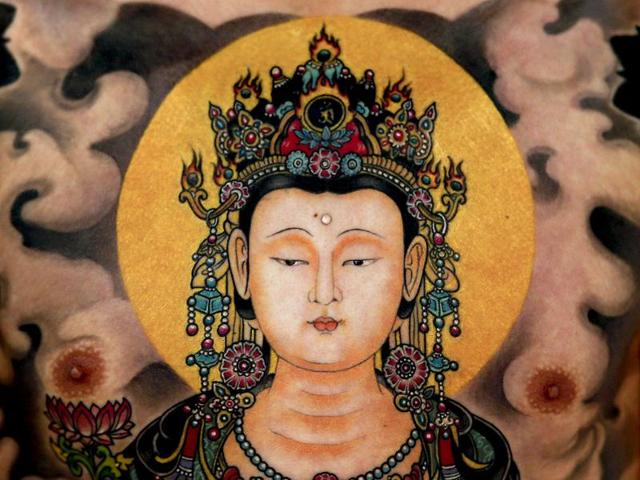Krishna and Buddha: Were they similar? A cold, clear look at the patterns
I recently saw a Facebook post that imagined that the Buddha came up to Arjun kneeling at Kurukshetra and Krishna and it set me reviewing the curious similarities between avatar eight, Krishna, and avatar nine, the Buddha.
I recently saw a Facebook post that imagined that the Buddha came up to Arjun kneeling at Kurukshetra and Krishna said, 'Siddharth, I am you and you are me; answer the archer's question,' and Buddha told Arjun to just walk away from his weapons. This little joke set me reviewing the curious similarities between avatar eight, Krishna, and avatar nine, the Buddha.

There can be little doubt that if Siddharth had not been a royal prince, the kings of the upper Gangetic plain would have never listened to him, certainly not his politically insecure clan, the Sakyas. Indeed, the Sakyas would have been the first to finish off Siddharth if he'd been an unknown, unconnected person preaching male equality, considering the trick they played on the powerful, upcoming regional contender, King Prasenajit of Kosala: they married off their maid to Prasenajit instead of the Sakya princess he demanded. So it's interesting how Siddharth went forth as a missionary of peace and won over many kings including Prasenajit and all would have been well in the region - except Prasenajit's son by the maid, Crown Prince Viruddhaka, accidentally discovered the fraud of his parentage while visiting the Sakyas. Nothing could save the Sakyas then from being massacred and their territories from being annexed to Kosala.
The Buddha's agenda exudes deep Gangetic politics, a maha-chaal for the future of the region that went horribly wrong. And if we look at the Mahabharata coldly and clearly without being distracted by pawn-princess Draupadi, we see that its actual agenda is the maha-chaal of the Krishna-Vyasa combine against the takeover of the Gangetic kingdoms by the ambitious king Jarasandh of Magadha.
After two attacks on Mathura by Jarasandh, Krishna first moves his own clan to safety, to Dwarka. He reviews his political options, picks his cousins, the Pandavas and orchestrates an alliance for them with their neighbour Panchala. He next sets them up at 'Indraprastha'. Finally, he gets Bhim to kill Jarasandh before Yudhishtir's rajasuya (the ritual declaring him king-of-kings). Jarasandh removed, strong alliances in place… all would have been well in the region except Duryodhan's fury makes things go horribly wrong.
Despite Krishna's attempts at conflict-resolution, the battle of Kurukshetra builds up momentum and they have to fight. Kurukshetra turns into Krishna's post-Jarasandh mop-up - an inevitable battle fought for the future of the region. Exactly like Krishna, Siddharth diverted popular ritual worship away from old gods and while rejecting kingship himself, he influenced many kings and commoners. Despite their outwardly different personae their basic philosophy was 'Be engaged but be detached.' Both had a regional master plan that required extraordinary personal deeds to establish authority over volatile rajas and prajas. Both said 'Don't fight'. But neither charismatic strategist could prevent it (nor could their legatee, Gandhi).
In my view, 'itihasa' is to look at the patterns clinically; not through naïve ideology nor through the smoke of incense. It is impossible that the Hindus did not recognise politics when they saw it: as Krishna and Siddharth attest, maha-chaal is us. The players changed but the game went on.





